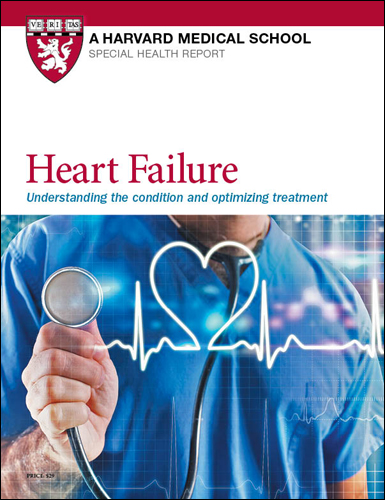Is broken heart syndrome becoming more common?
Rising rates of these unusual heart attacks — also known as takotsubo syndrome or stress cardiomyopathy — may reflect increased awareness of the condition.

The classic symptoms of a heart attack, such as squeezing chest discomfort and trouble breathing, usually occur when a blocked coronary artery chokes off part of the heart's blood supply. But those same symptoms can arise when the coronary arteries are clear. In some of these cases, broken heart syndrome may be to blame.
Also known as takotsubo syndrome or stress cardiomyopathy, this uncommon condition usually results from severe emotional or physical stress, such as from the death of a loved one, a serious illness or surgery, or a natural disaster. Other possible triggers include a fierce argument, financial loss, intense fear, or (in rare cases) even happy emotional events such as a wedding or surprise party.
"Sudden, extreme stress can cause a surge of adrenaline that precipitates a cascade of changes to the heart that we're just beginning to unravel," says Dr. Malissa Wood, co-director of the Corrigan Women's Heart Health Program at Harvard-affiliated Massachusetts General Hospital. The changes affect the heart's muscle cells and blood vessels, temporarily altering the shape of the left ventricle, the heart's main pumping chamber (see "A shape-shifting heart"). The heart must work harder than usual, leading to chest pain and breathlessness.
A shape-shifting heartIn the early 1990s, Japanese doctors first described a condition in which the heart's left ventricle takes on an unusual appearance, developing a narrow neck and a round bottom. The shape resembles a tako-tsubo (octopus pot), a traditional clay vessel a fisherman uses to trap an octopus. Because takotsubo syndrome was often preceded by emotional events, such as heartbreaking grief or intense stress, it also became known as broken heart syndrome and stress cardiomyopathy. Physical stress from an accident, illness, or surgery can also precipitate the problem, but in up to 20% of cases, no specific trigger can be identified. |
Cases in middle-aged women
Takotsubo syndrome, which is far more prevalent in women than men, may not be as rare as once thought, according to a study published Oct. 19, 2021, in the Journal of the American Heart Association. Based on hospital data from more than 135,000 people diagnosed with takotsubo syndrome from 2006 to 2017, researchers found that the incidence rose steadily during that time. And among women ages 50 to 74, takotsubo diagnoses rose six to 10 times more rapidly than for any other demographic.
"In general, we are now better at recognizing and diagnosing all types of heart attacks in women," says Dr. Wood. Prior to the early 2000s, heart disease was substantially underdiagnosed in women. The increase in takotsubo syndrome cases since that time probably reflects heightened awareness of the condition among cardiologists, she says. "It will be interesting to see how the incidence changes in the setting of the COVID-19 pandemic, given the extreme emotional and physical stress people have experienced."
Diagnosing a broken heart
When people show up at an emergency room with chest pain, they receive a test that records the heart's electrical activity (electrocardiogram) and blood tests. But with takotsubo, results from those tests may be similar to those of a regular heart attack. So doctors rely on an ultrasound of the heart (echocardiogram) to check for the characteristic change in the heart's shape, although more invasive testing may be needed to rule out a traditional heart attack.
"The person's history tips us off more than anything else," says Dr. Wood. The triggering event typically occurs within minutes or hours of when the symptoms appear, she says. Although the symptoms subside quickly with treatment, the heart abnormality can persist for weeks. But the damage isn't usually permanent, and most people recover fully within a month.
Mending a broken heart
Treating takotsubo syndrome usually involves blood pressure medications known as ACE inhibitors and beta blockers, which help lower the heart's workload. It's also important to address physical and emotional conditions that may have played a role in triggering the disorder, says Dr. Wood. "I make sure my patients have access to therapy or programs that can help them manage stress, such as the mindfulness and resiliency training programs at the Osher Center for Integrative Medicine and the Benson-Henry Institute." (See www.brighamandwomens.org/osher-center/integrative-medicine-overview and https://bensonhenryinstitute.org; major academic medical centers across the country have similar programs).
Image: © Erlon/Getty Images
About the Author

Julie Corliss, Executive Editor, Harvard Heart Letter
Disclaimer:
As a service to our readers, Harvard Health Publishing provides access to our library of archived content. Please note the date of last review or update on all articles.
No content on this site, regardless of date, should ever be used as a substitute for direct medical advice from your doctor or other qualified clinician.
















